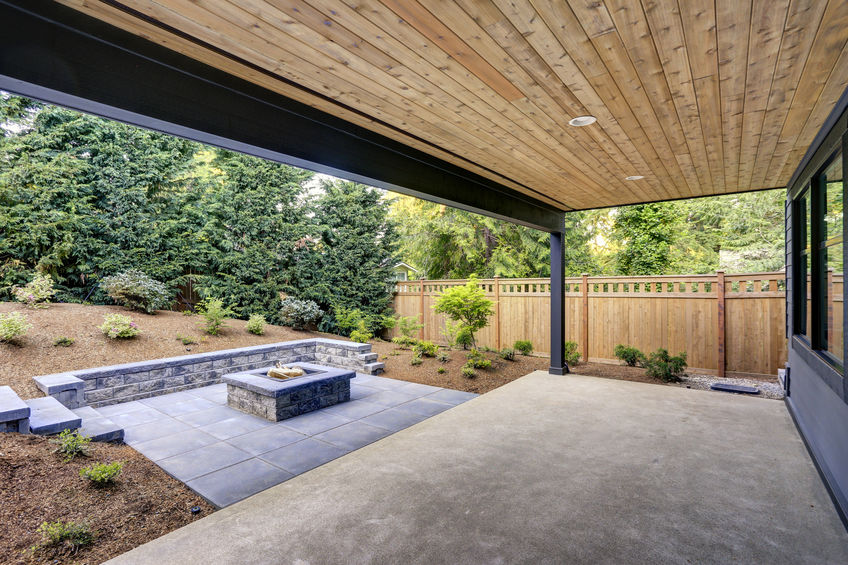The material for your patio should not only stand up to the weather conditions in your area but also be less demanding when it comes to maintenance. This article discusses the differences between concrete and pavers to help you determine the best material for your patio.
What Are They?

A paver patio is made up of several colored pieces of concrete that are laid individually by hand to create a durable surface. A concrete patio is made out of concrete poured onto a solid surface and embossed to resemble stone, brick, wood, slate, or tile. Pavers are manufactured off-site before they are transported to the construction site for installation while a concrete patio is done on-site using a few tools that create the designs or patterns. Both concrete and paver patio appeal to different homeowners and their durability or lifespan depends on where you live.
Major Differences between a Concrete Patio and a Paver Patio
- Installation
A concrete patio is easier to install than pavers because liquid concrete is poured in the allocated area and left to solidify before it is embossed with the selected design. For a paver patio, you need to lay each paver by hand. Although it might seem easier to build stamped concrete than a paver patio, it is recommended to have both options installed by professionals. Both installations involve excavation, land grading, and preparation of the foundation to determine its overall look and durability.
- Durability
Concrete slabs are prone to cracking and splitting when the ground shifts beneath them. They can also be affected by temperature changes since a concrete patio is laid as a single large surface. Unlike concrete, pavers do not crack because they can loosen over time. Once a concrete patio cracks or encounters major damage, you need to dig up the entire area and start over again. However, when pavers loosen or get damaged, you only need to replace the individual pieces that have been affected.
- Maintenance
Concrete is easy to maintain than pavers but can crack easily and may require staining with time. You can have it washed with soap and brush before rinsing it off. It is also possible to add protective sealants on stamped concrete to help block stains. However, the sealant needs to be applied regularly if you want to maintain its appearance and effectiveness. Unlike concrete slabs, pavers are difficult to clean because they are individually placed. The biggest concern with maintaining a paver patio is that weeds often grow between the cracks and pavers. Polymer sand is used to interlock the pavers and is poured between the cracks and crevices to provide more durability.
- Appearance
Pavers are visually appealing than concrete slabs because they can be manipulated to create beautiful patterns and designs. They also come in a variety of colors that allows homeowners to be creative with their space. Although concrete patios may not have numerous color options, you can still choose between decorative or stamped concrete for better looks and customization. Although you can add color to poured concrete, you need to reapply it every couple of years to maintain its looks as it fades quickly over time.
- Safety
Concrete slabs tend to be slippery when wet, especially if they are painted or treated with a protective sealant. The nature of the surface can cause slips and falls when wet, thus poses a great safety hazard. Since pavers are individually placed, they do not have issues with slipperiness because the edges of each paver provide traction. However, you may run into the same problem if you choose concrete pavers as they become slippery when wet.
The benefits of pavers make them look like a better option than concrete, but the factors that determine how long they both last include correct installation, proper maintenance, and the climatic conditions in your area. You can still enjoy the durability of concrete patios as long as you provide regular care and maintenance. However, paver patios have a higher resale value than stamped concrete because of their beauty and versatility. Although they may cost more upfront, they offer a greater return on investment than a concrete patio.
